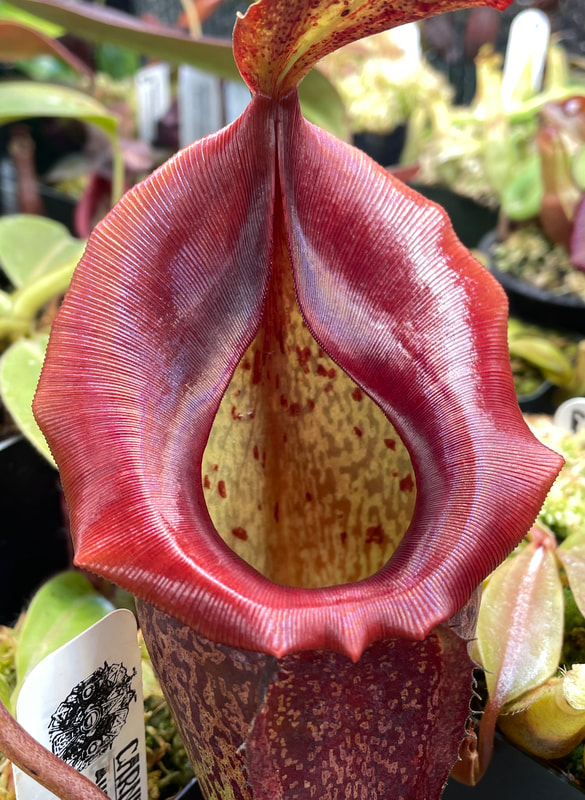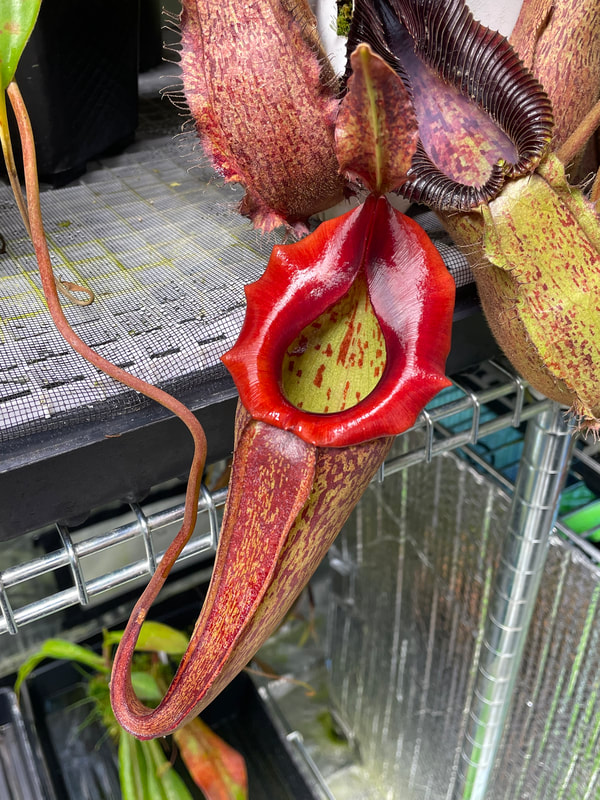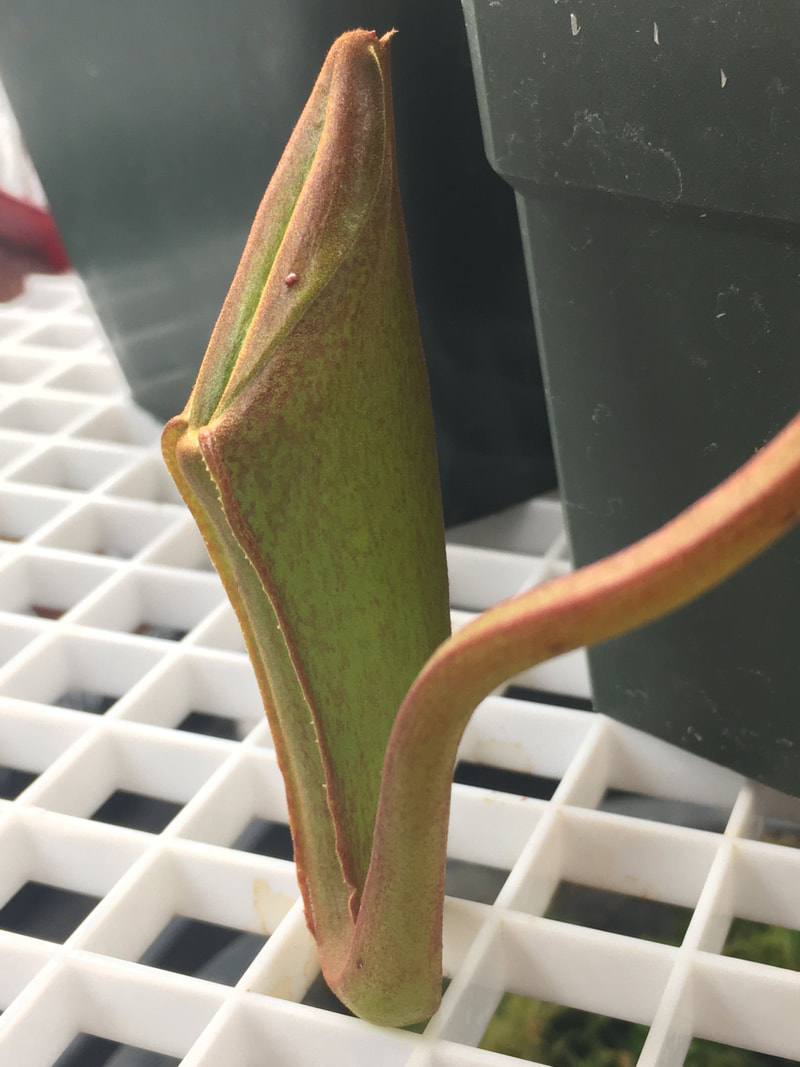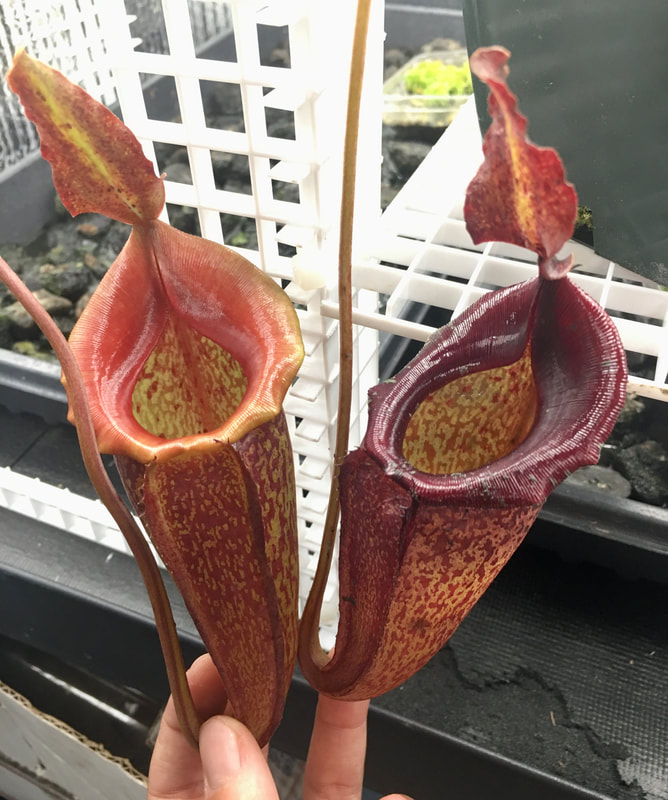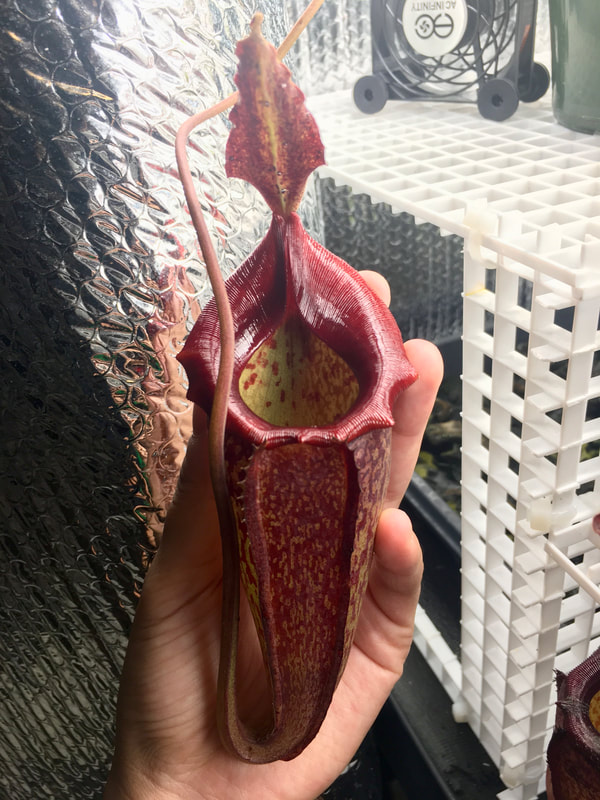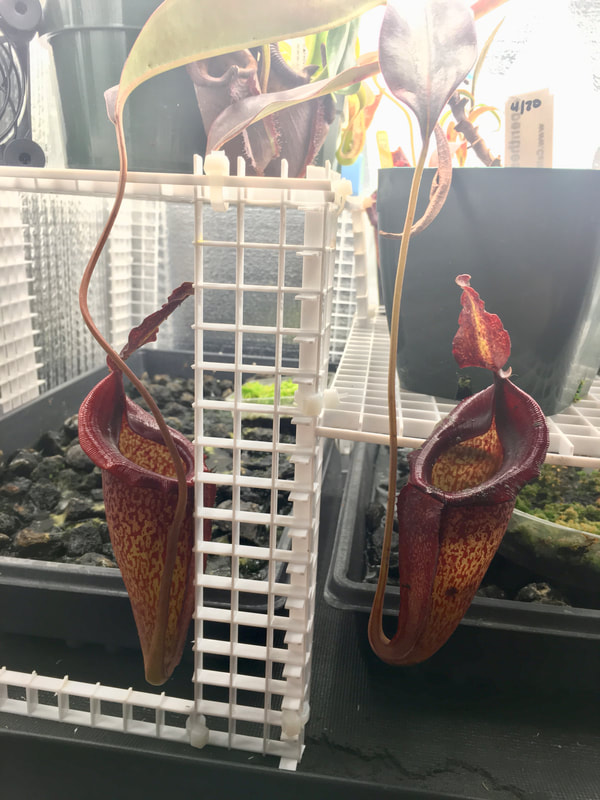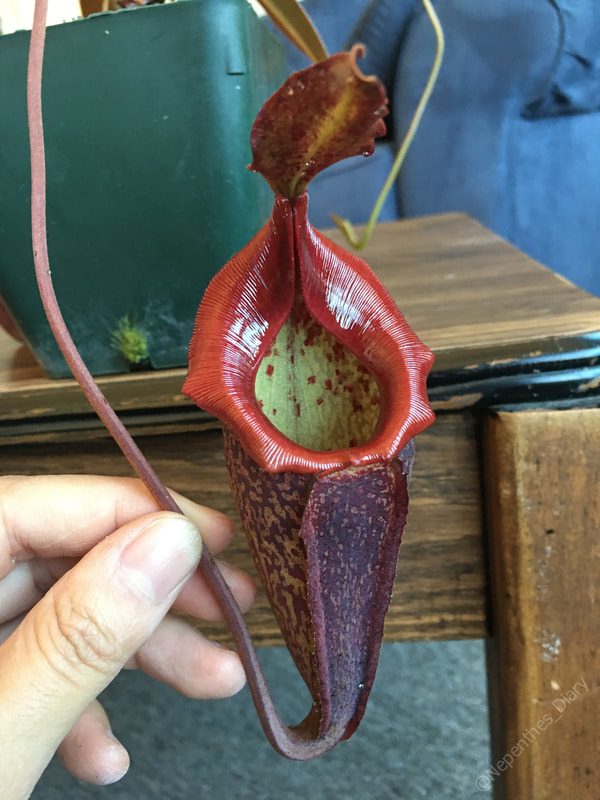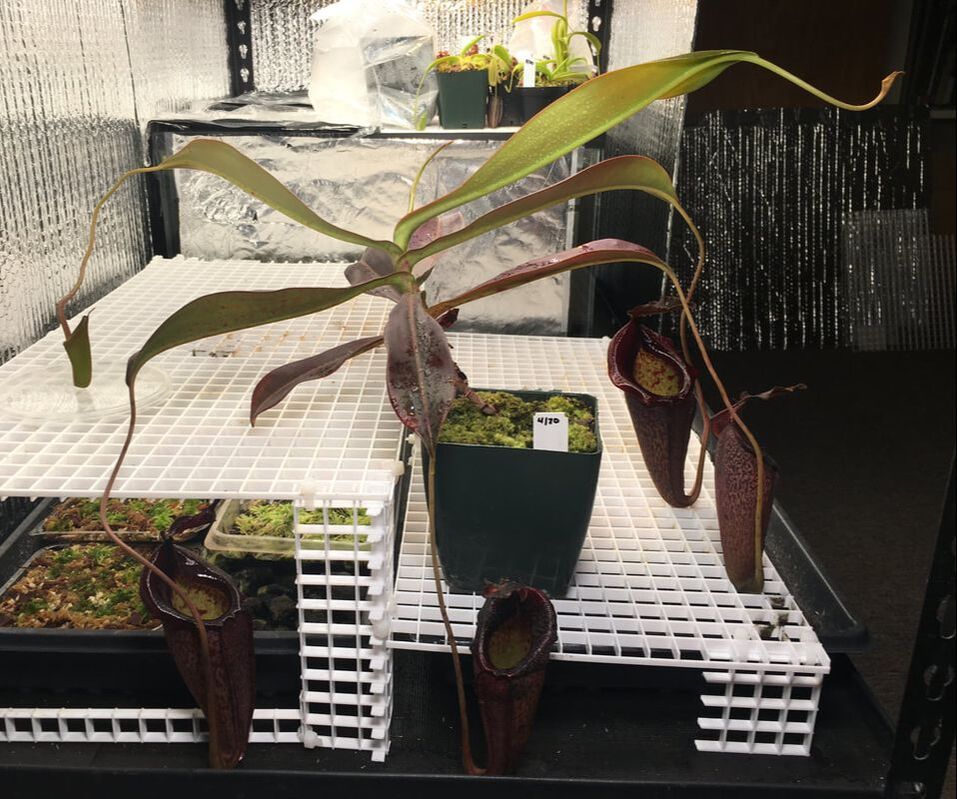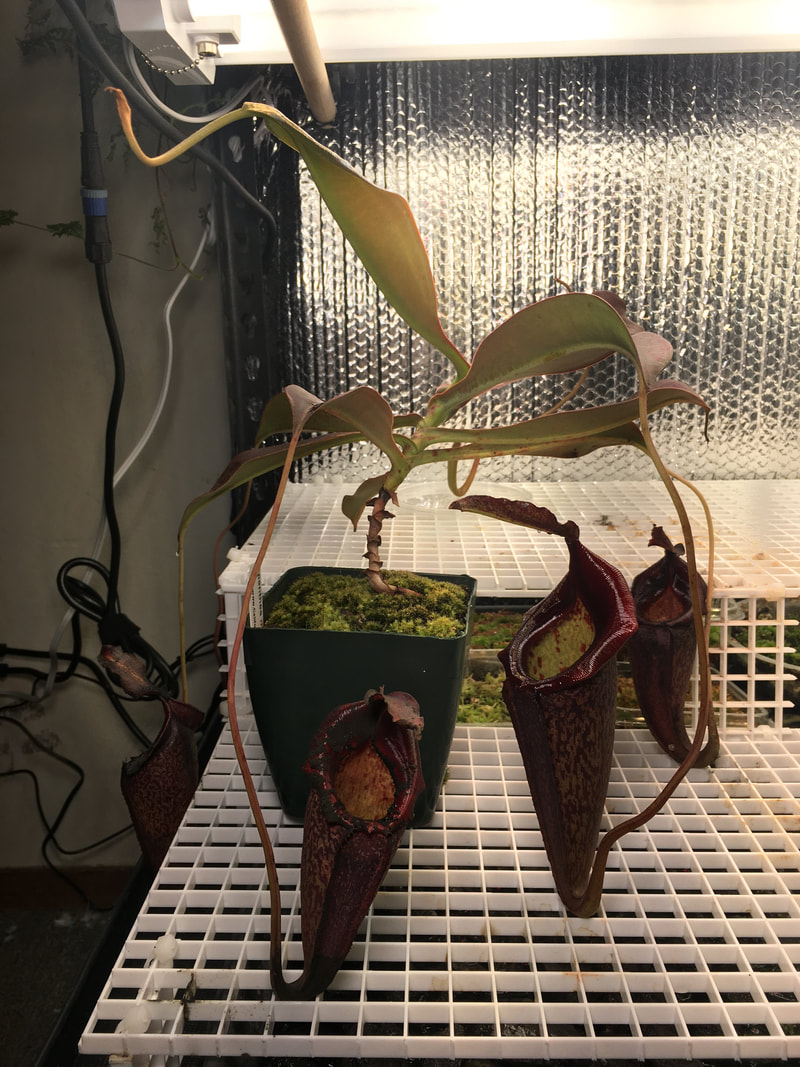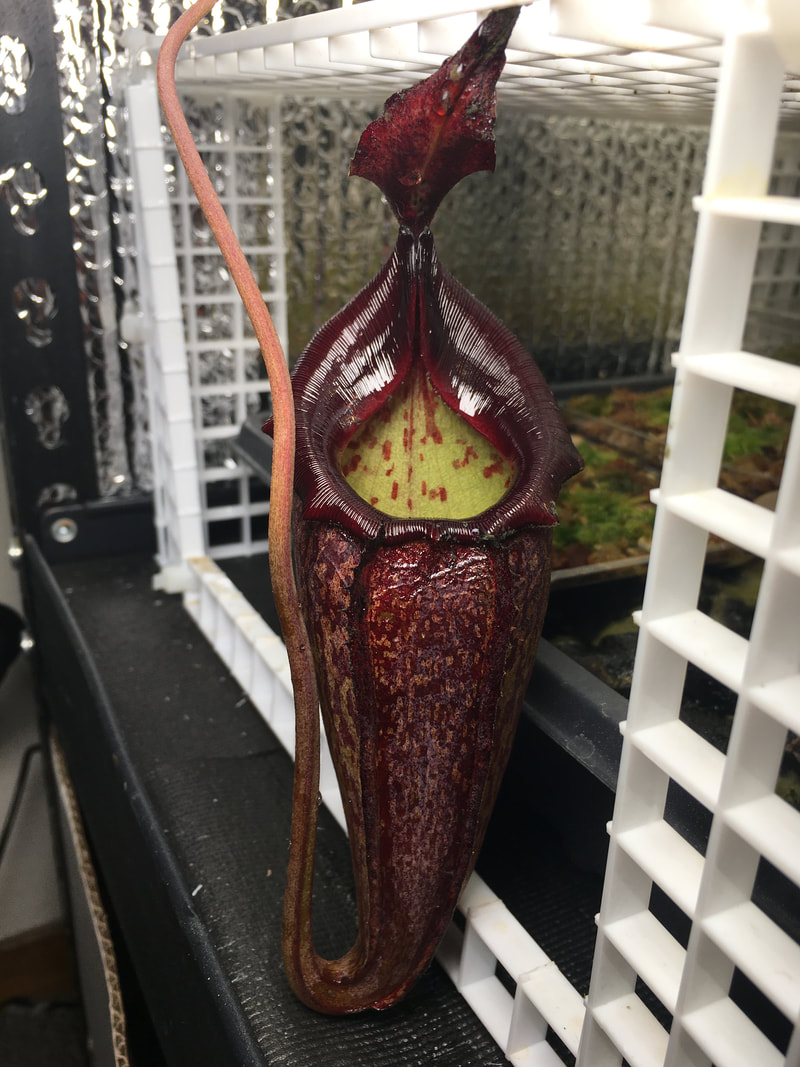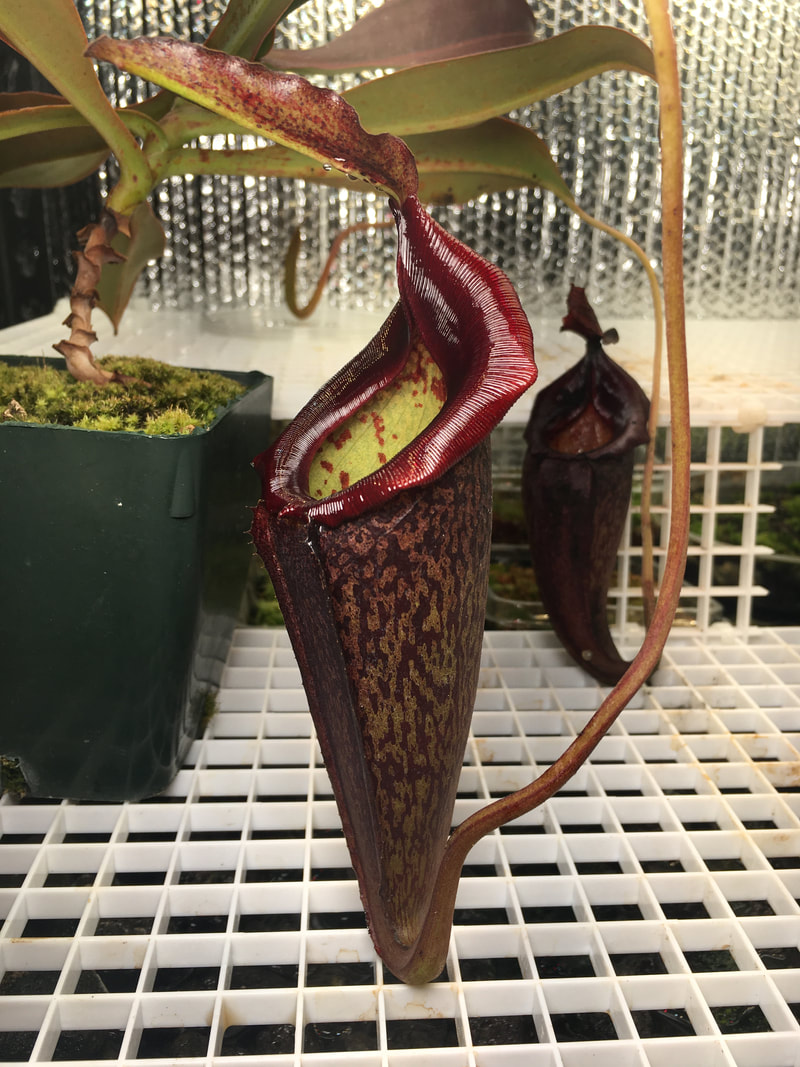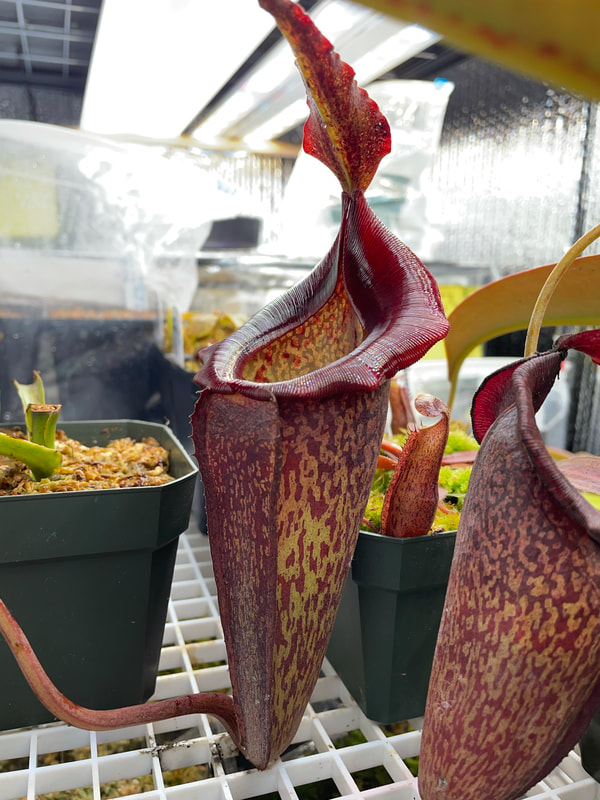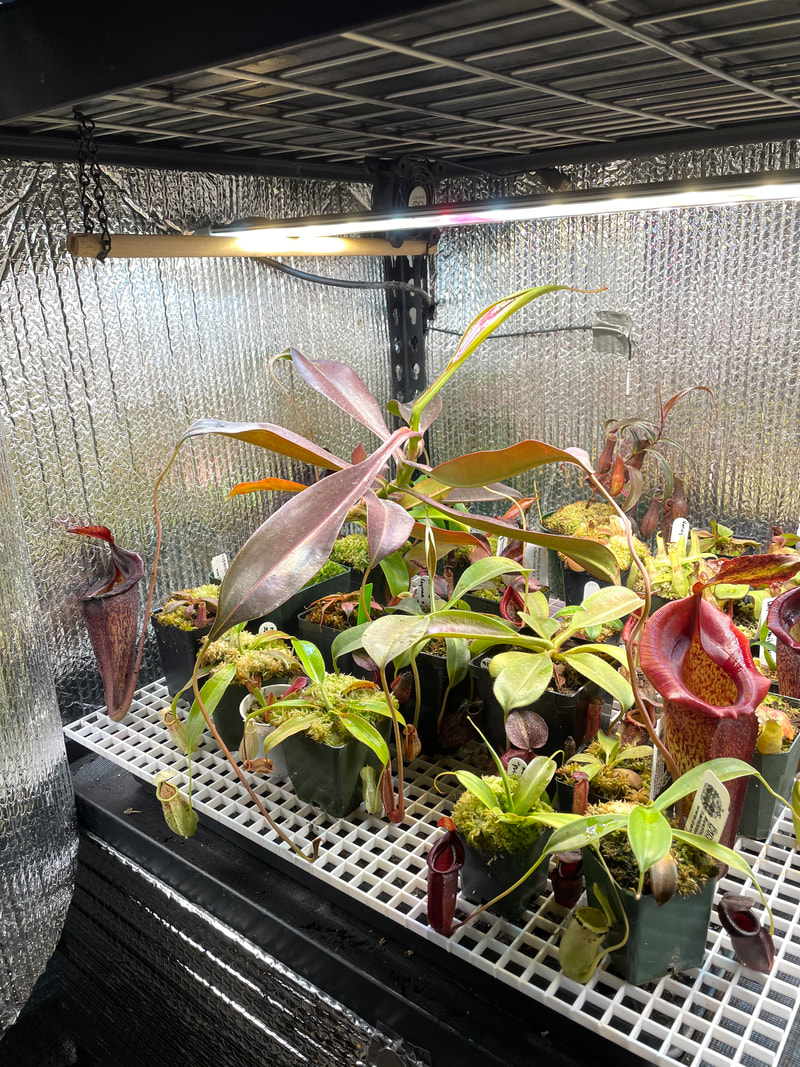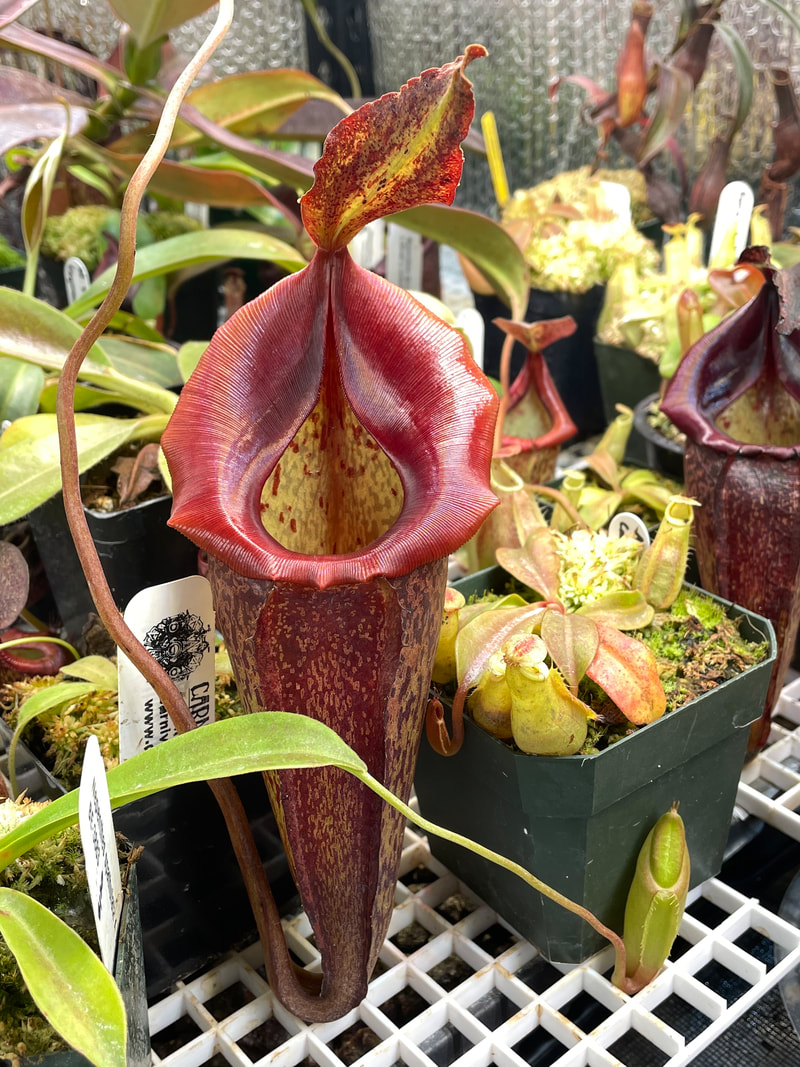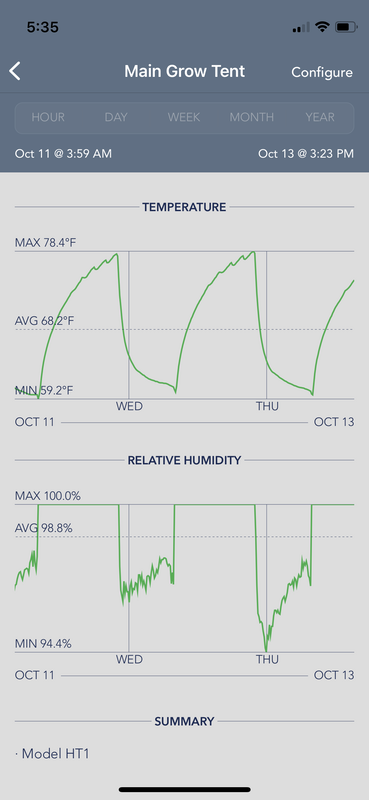|
Interesting and beautiful pitcher shape on this cross! The jacquelineae peristome really comes through on this one! Entire plant is a gorgeous deep maroon color in good light.
|
|
From Borneo Exotics: " First Introduced in April 2014. The female parent is our Gng. Lumut form of Nepenthes maxima, which is the finest form we have ever seen. It is sold under BE-3067 and was previously thought to be Nepenthes eymae. The male parent is our best form of Nepenthes jacquelineae, selected from amongst those sold under BE-3093. All different individuals from seed."
|
I obtained mine as a young plant from California Carnivores sometime in the Summer of 2016. This plant took a while for me to figure out - for a year or two I kept it on my south-facing window where most of my intermediate growing Nepenthes do well. It limped along and only produced one pitcher that entire time. Despite its highland parent, I decided to try growing it in a terrarium at the end of 2018 to see if the higher humidity and warmer temperatures would encourage it to pitcher more. WOW it made a huge difference! It started producing pitcher after pitcher! Maybe the extremely wide and flared peristomes require more humidity to develop? The leaves are long, thin, and strap-like. As with most jacquelineae hybrids, the tendrils are extremely long! The whole plant is a gorgeous deep maroon color, probably from the maxima parent. I love how much smaller and thinner the base of the lower pitchers is compared to the wide pitcher opening combined with that amazing peristome. Can't wait to see the uppers! I have a feeling they are going to be amazing!
November 2020
Had to rearrange my terrarium shelf and took a few pics to record just how large this plant is getting! And wow it does just sprawl everywhere! I lowered the shelf by 3 inches to give it more room to grow and to reduce the light intensity for my lowland seedlings. Absolutely love how long it holds on to its pitchers! Definitely a wonderful trait from the maxima parent!
March 2021
This plant continues its domination of the terrarium! It holds about six active pitchers at a time and they are interspersed between all of the smaller plants and pots all throughout the terrarium. It also popped a new basal this month!
October 2022
Truly a massive plant! About 2.5 feet in diameter from leaf blade tips and extremely long tendrils to boot! I find most of the pitchers underneath the bench. The grow tent gives it much more room to grow!
|
Current Growing Conditions:
Intermediate/Highland Grow Tent Light: Mars Hydro TSL 2000 LED Grow Light Humidity: ~95-100% constant (MistKing set to 30s every 2 hrs) Temperature: ~60F night and 80F day Water: Moist but not wet Potting Mix: 50% long fibered sphagnum moss 50% perlite Fertilizer: MaxSea (1/4 tsp/gallon) every other week into pitchers and lightly spray leaves Additional Notes: Needs lot of room to grow! Long tendrils will hang pitchers all over the place! |
Proudly powered by Weebly
